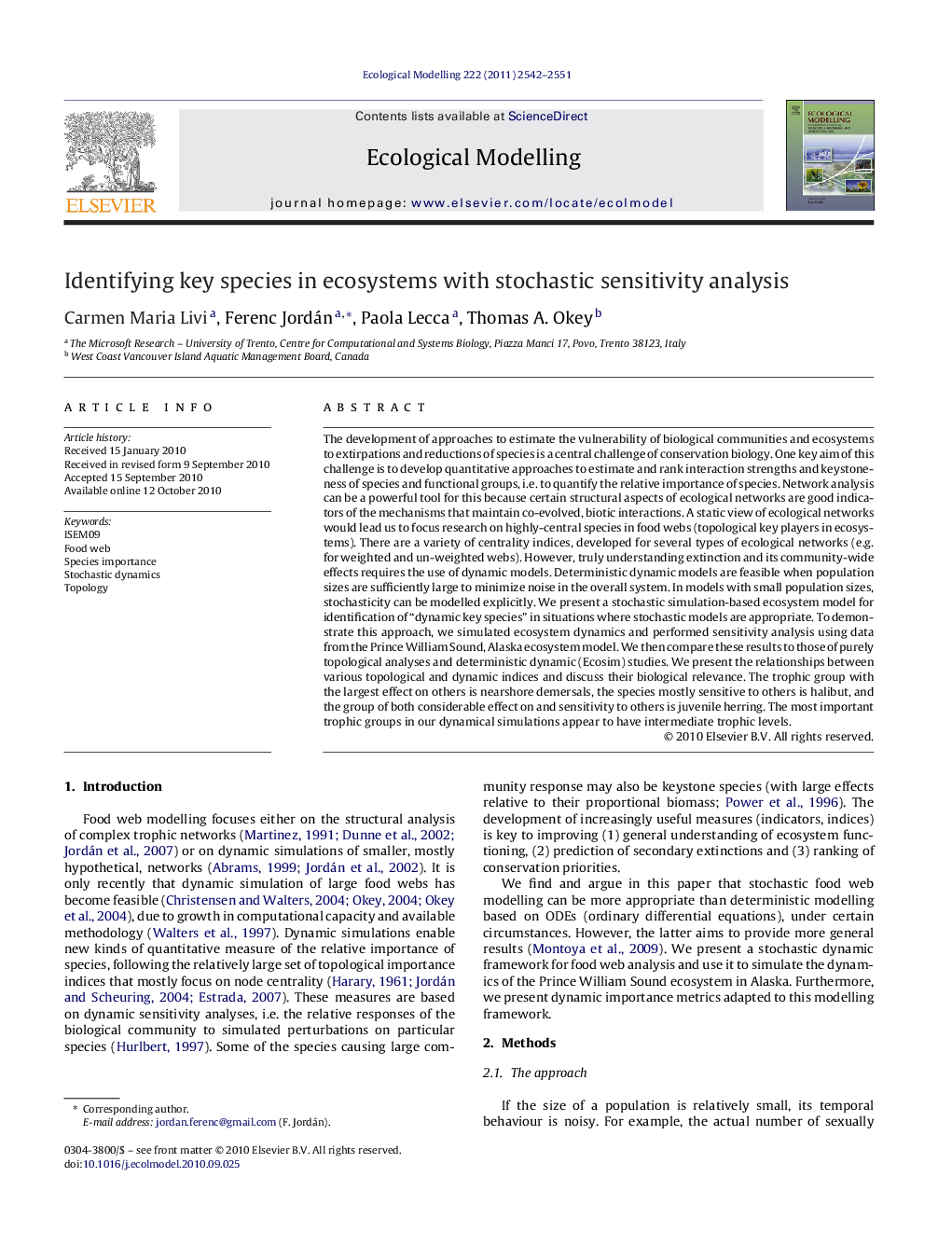| Article ID | Journal | Published Year | Pages | File Type |
|---|---|---|---|---|
| 4376894 | Ecological Modelling | 2011 | 10 Pages |
The development of approaches to estimate the vulnerability of biological communities and ecosystems to extirpations and reductions of species is a central challenge of conservation biology. One key aim of this challenge is to develop quantitative approaches to estimate and rank interaction strengths and keystoneness of species and functional groups, i.e. to quantify the relative importance of species. Network analysis can be a powerful tool for this because certain structural aspects of ecological networks are good indicators of the mechanisms that maintain co-evolved, biotic interactions. A static view of ecological networks would lead us to focus research on highly-central species in food webs (topological key players in ecosystems). There are a variety of centrality indices, developed for several types of ecological networks (e.g. for weighted and un-weighted webs). However, truly understanding extinction and its community-wide effects requires the use of dynamic models. Deterministic dynamic models are feasible when population sizes are sufficiently large to minimize noise in the overall system. In models with small population sizes, stochasticity can be modelled explicitly. We present a stochastic simulation-based ecosystem model for identification of “dynamic key species” in situations where stochastic models are appropriate. To demonstrate this approach, we simulated ecosystem dynamics and performed sensitivity analysis using data from the Prince William Sound, Alaska ecosystem model. We then compare these results to those of purely topological analyses and deterministic dynamic (Ecosim) studies. We present the relationships between various topological and dynamic indices and discuss their biological relevance. The trophic group with the largest effect on others is nearshore demersals, the species mostly sensitive to others is halibut, and the group of both considerable effect on and sensitivity to others is juvenile herring. The most important trophic groups in our dynamical simulations appear to have intermediate trophic levels.
